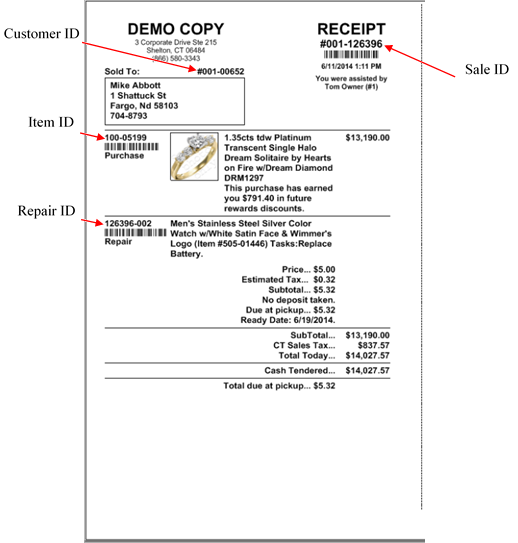In The Edge, all items and transactions have unique identifiers, which are assigned automatically by The Edge. So you can easily access records, these are cross-referenced across associated customers, sales, items, services, and parts.
|
Numbering Scheme
|
Example
|
Breakdown
|
|
Sale ID
|
001-126396
|
001 is store
126396 is sale number
|
|
Customer ID
|
001-000652
|
001 is the store where the customer first made a purchase
000652 is the customer number
|
|
Item ID
|
[001-]100-05199
|
[001 is store where the item is located] (if you only have one store, that store number does not appear, as is the case here)
100 is category number
05199 is the item number
|
|
Repair/custom job service request and associated tasks ID
|
[001-]126396-002-001
|
[001 is store where the transaction originated] (not shown here, but on the envelope)
126396 is sale number
002 is job number; it corresponds with the line number in the original in-take transaction
001 is the repair task number (shown on the repair envelope, not on the receipt
|
Although all records contain a store number, if you are a single-store operation, it is unnecessary to use the store number prefix. The store number is 001 by default and is only used behind the scenes.
For multi-store users, the store number is the location of the transaction by default. If you are searching for a record within your store, the store number is automatically assigned. However, if you are searching for an item or transaction outside your store, you must include the store ID.
 There is never a need to type leading zeroes when searching for a record. For example, if you’re searching for item number 002-100-00001, you need only enter 2-100-1. The Edge fills in the leading zeroes.
There is never a need to type leading zeroes when searching for a record. For example, if you’re searching for item number 002-100-00001, you need only enter 2-100-1. The Edge fills in the leading zeroes.
